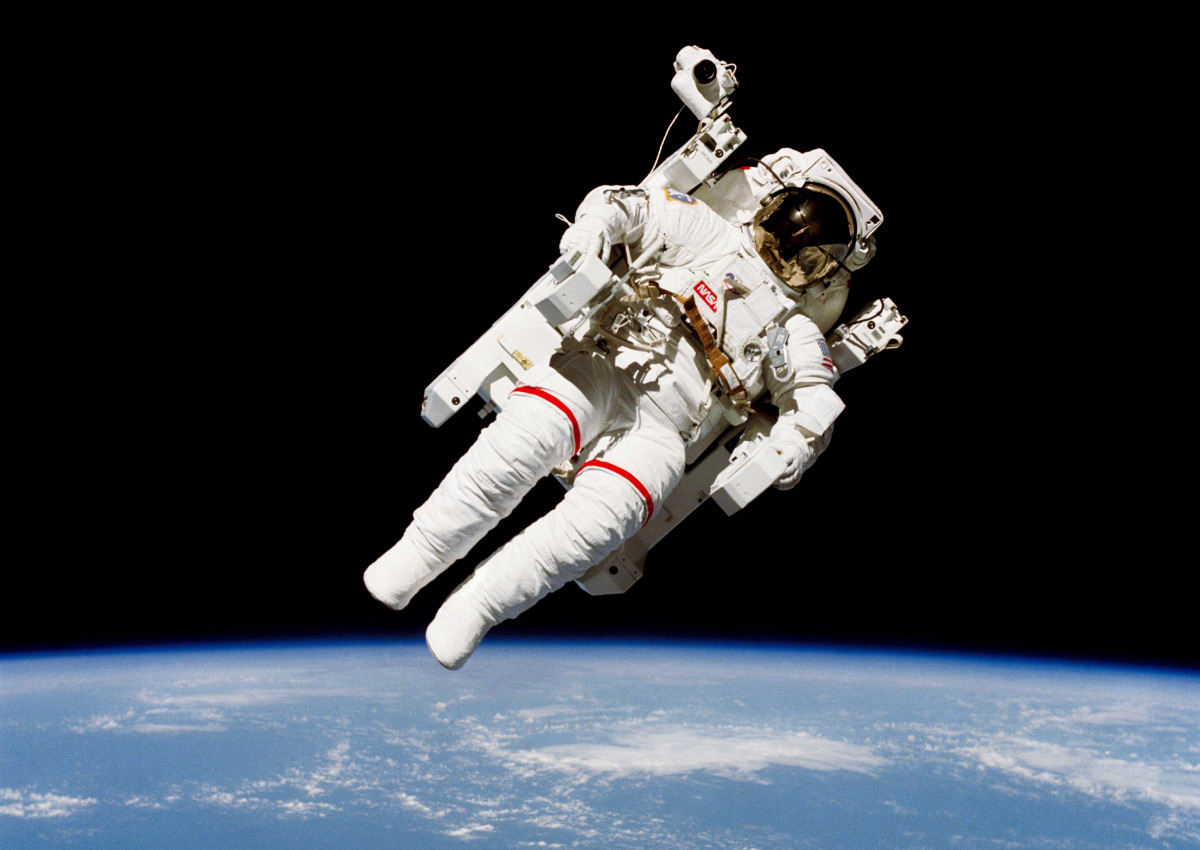Astronaut Bruce McCandless orbits Earth as if he were a tiny moon during Space Shuttle mission STS-41-B. Credit: NASA

Chapter 3 - How Science Discovered the Earth
CHAPTER INTRODUCTION
Imagine yourself as a satellite, orbiting Earth like the astronaut in the photo above. As you look down at the thin layer of atmosphere that separates our homes from the blackness of space, you’d be seeing Earth in a way that most of our ancestors could never have imagined.
Think back on all the ideas we’ve discussed in the first two chapters. We’ve talked about why ancient villagers would have assumed that they lived on a small, flat surface covered by a domed sky, and we’ve contrasted that idea with the facts we know today: Earth is a planet, orbiting a star, located in a galaxy that is one among billions in a vast, expanding universe.
How did we go from ancient beliefs to our modern understanding of Earth? The answer is through science. In this chapter, we’ll explore how modern science arose largely through human efforts to understand the kinds of sky phenomena that you studied in Chapter 2. We’ll also see how the methods of modern science have made it possible to produce reliable knowledge about how the universe works —so reliable that we can use this knowledge to launch astronauts into space, let them float freely above our planet, and then return them safely to Earth.
Journal Entry
What is Science?
Write a paragraph or two in your journal to describe how you would define science, and how you would distinguish something we consider science (such as Earth science or astronomy) from something that is not science. Leave plenty of space after your entry so that you can come back and revise your answer later.
This journal entry is designed to help you as a teacher understand how much your students know or remember about the nature of science from earlier grades, which will help you plan how much time you need to teach the concepts in this chapter. As usual for journal entries, grading should be based on effort, not on whether they answer correctly or not. Later, students should go back to this journal entry to evaluate for themselves whether their initial ideas were correct or whether they have modified them based on what they learned.
Group Discussion
Gravity
One of the great achievements of modern science has been in the way it has helped us understand gravity and the many roles in plays in our lives. We’ll discuss gravity in some detail later in this chapter. To help you start thinking about it, hold a group discussion in which you try to do the following as best you can for now.
- Make a list of as many things as you can that are explained by gravity.
- For each item on your list, discuss how you think gravity explains them.
- Based on your list and discussion, try to come up with a definition of gravity that is as simple as possible.
This discussion can be done in small groups but is probably better done with you leading the whole class to keep the discussion focused and on track. Notes on possible answers:
- Once you get students started on the right track, they should be able to come up with many good answers to this question. For example:
- Gravity holds us to the ground.
- Gravity makes objects fall when dropped.
- Gravity keep the Moon in orbit of Earth.
- Gravity keeps satellites and the International Space Station in orbit of Earth.
- Gravity holds Earth in orbit around the Sun.
- Gravity makes planets and stars round.
- Gravity holds galaxies together.
- This “how” question will be more difficult for students. Try to get them to begin to realize that gravity must be an attractive force between objects, and one that acts toward a center. It will be relatively easy for most students to grasp how this idea leads to gravity holding us to the ground and making objects fall. Somewhat more advanced students will recognize that larger masses have more gravity and this, along with acting toward a center leads to the idea that gravity makes smaller objects orbit larger ones, and also makes larger objects like planets and stars round. A few students will also recognize that orbits involve objects moving and “falling” at the same time.
- The goal here should be to get them to realize that their definition should at minimum include the fact that gravity is an attractive force between masses. Some students will already know more, such as that it depends on the masses and the distance between the masses.